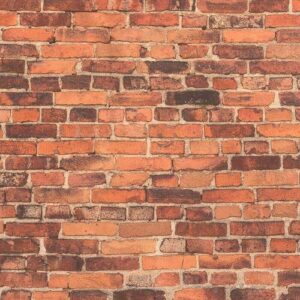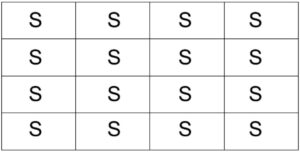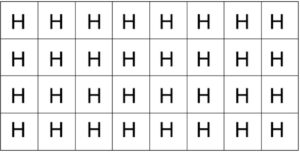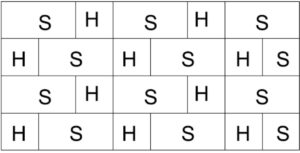Contents
Bricks ? Type of bonds in masonry wall construction? which bond is best Flemish or English Why ?
Flemish bond and English bonds are the mostly used bonds in brick wall construction. Bricks are the rectangular blocks used to construct the walls in the building structures. Generally bricks are made will clay material which is having red or brown in color. Depending upon the type of construction bricks like red bricks, ACC blocks or other are used in walls. But for low rise buildings the clay breaks are used.
The standard size of clay brick is approximately 19cmX9cmX9cm (190mmX90mmX90mm). The following shows the sample brick wall in construction site.

Bonding in the brick wall
Bonding is the method of placing the brick blocks in pattern with respect to the horizontal and vertical direction. If the bonding in the bricks is not properly arranged the cracking effect will observed in walls, to avoid this problem the bonding of the bricks should done perfectly.
Based on the various building considerations the masonry infill walls are classified into various bonds like stretcher bond, header bond, English bond, Flemish bond, double Flemish bond, single Flemish bond, brick on edge bond, dutch bond, ranking bond, zig zag bond, abd facing bond.
But mainly four bonds are used in the building structures which are namely
- Stretcher bond
- Header bond
- English bond
- Flemish bond
1. Stretcher bond
The longest face of the brick is termed as the stretcher in the brick. For the brick which is having 19cmX9cmX9cm the longest face is taken as 19cm, so the size of stretcher is considered as 19cm side. In this case the arrangement of bricks in wall is taken to form of stretcher in every course. The half bats are used in this stretcher bond in order to break the vertical alignment.
The below figure shows the sample stretcher bond in brick wall construction.

2. Header bond
The shortest side or face of the brick is considered as the header in the brick. Basically for the brick of 19cmX9cmX9cm the shorter side is 9cm, so the header is taken as 9cm side. In this bond the bricks are placed in the form of header in each course for the brick wall. The three quarter brick bats are used in this case in order to break alignment of vertical joint.
The below figure shows the pattern followed in the header bond in brick wall construction.

3. English Bond
The English bond is most frequently used system in masonry wall construction. It is the arrangement of the bricks which contain alternative layers of stretcher and header layers place one after other over the height of the brick. In this case the queen closer is places next to the quoin header in order to break the alignment of the joint in the brick walls.
In this bond the queen closer is not placed at the starting or the ending of that respected course. And the length of the brick is considered as the minimum lap available.
The below figure shows the English bond used in the brick wall construction at the site.

4. Flemish bond
The Flemish bond is the one in which the stretcher and header is comes in alternative position throughout in the row. In this bond the queen closer is placed next to the quoin header in the each alternative course throughout the wall in order to beak the alignment of the joint in the brick wall.
This bond is most pleasing bond than the English bong in wall construction but it requires skilled worker to make perfect bond. This bond is economical bond than other cases because wastage of bricks is less in this case due to use of half bricks in the wall construction.
The below figure shows the Flemish bond used in the brick wall construction in the site.

Comparison between English bond and Flemish bond
The following are the 5 main comparison points considered in English bond and Flemish bond which is shown in the table
|
S. No |
English Bond |
Flemish Bond |
|
1 |
The alternative header and stretcher layer are placed one after other. | The alternative header and stretcher layer placed in the course |
|
2 |
Not Required more skilled workers | Required more skilled workers |
|
3 |
More costly when we compared with Flemish bond | Economical as per the cost |
|
4 |
More strong as per the strength | Less strong when we compared with English bond |
|
5 |
Pleasing appearance is less | More attractive and appearance |
Which bond is beast English bond or Flemish bond and why?
Basically English bond the placing of header and stretcher in the layer wise throughout the height of the brick wall and Flemish bond is the placement of bricks in alternative position of header and stretcher throughout the length. Now a day’s English bond is using in most of the wall construction because it is having various advantages over the Flemish bond. In English bond it is strong than Flemish, not required skilled worker, and easy for installation when we compared with other bonds. But as per the economy point of view the Flemish bond is best than English bond in building design considerations.
Conclusions of brick work bond ? which bond is best Flemish or English bond and Why ?
Well now the above explained concepts are related to the definition of brick, definition of bonding in brick wall and comparison between the English bond and Flemish bond. As per the header and stretcher placement, as per the workers point of view, as per the economy, as per the strength and as per the appetence.
From this article it was clearly concluded that English bond is beast and economical because of various advantages of bond over the other bonds namely Flemish, stretcher and header bond.
Please follow my YouTube channel for more information regarding civil engineering concepts.
If you have any quarries regarding this article please feel free to reach us at contact us page.
Thank You
Your Shravan
Have a good day.